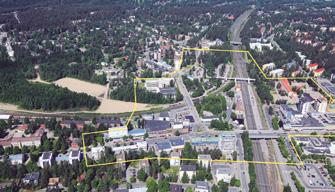CHARLEROI (BE) PROJECT SCALE — XL/L – territory / urban + architecture
SITE PROPOSED BY — City of Charleroi /Duferco Wallonie
LOCATION — Charleroi, “Western Gate”
OWNER OF THE SITE — City of Charleroi /Duferco Wallonie
POPULATION — 201,327 inhab.
POST-COMPETITION PHASE — Urban planning and architectural
STRATEGIC SITE — 199 ha / PROJECT SITE — 35 ha
study prior to the development
Cellule Charleroi Bouwmeester — 1. WHAT ARE THE GOALS OF THE SITE MUTATION?
The reconversion of this place boasts a momentum that could lead to a series of radical changes in the area around Charleroi. Through the choice of a landscaped productive park, the city authorities aim to cut loose from the properties of the existing landscape to bring together new economic investment that is in keeping with the needs of a city seeking to attract new inhabitants. 2. HOW CAN THE SITE BE INTEGRATED IN THE ISSUES OF PRODUCTIVE CITIES? HOW DO YOU CONSIDER THE PRODUCTIVITY ISSUE?
It is a challenge not only in terms of an economical reconversion of a heavily contaminated single-function site, but also of its involvement in the surrounding urban fabric. The City of Charleroi is seeking a new pluralist form of productivity that is multi-faceted and integrated, and provides added value in economic, spatial, ecological and cultural terms. Charleroi, which lies at the centre of a vast coal-producing area, has given rise to a landscape made of slagheaps —artificial hills stemming from the unrestrained extraction 74
of resources from the ground, and which are today reserves for biodiversity. These hillocks are the illustration of a production cycle leading to the generation of other cycles. 3. HAVE YOU ALREADY DEFINED A SPECIFIC PROCESS FOR THE URBAN AND/OR ARCHITECTURAL DEVELOPMENT OF THE SITE AFTER EUROPAN COMPETITION?
With this Europan competition, the city is confronted to many variables that, in the short term, cannot be defined along a specific trajectory. This process implies different scales, in which the administration of Wallonia must first and foremost establish a dialogue with the company that owns the site. The area’s Seveso status must also give rise to long-term thinking that could reward the results of the reconversion.









































































